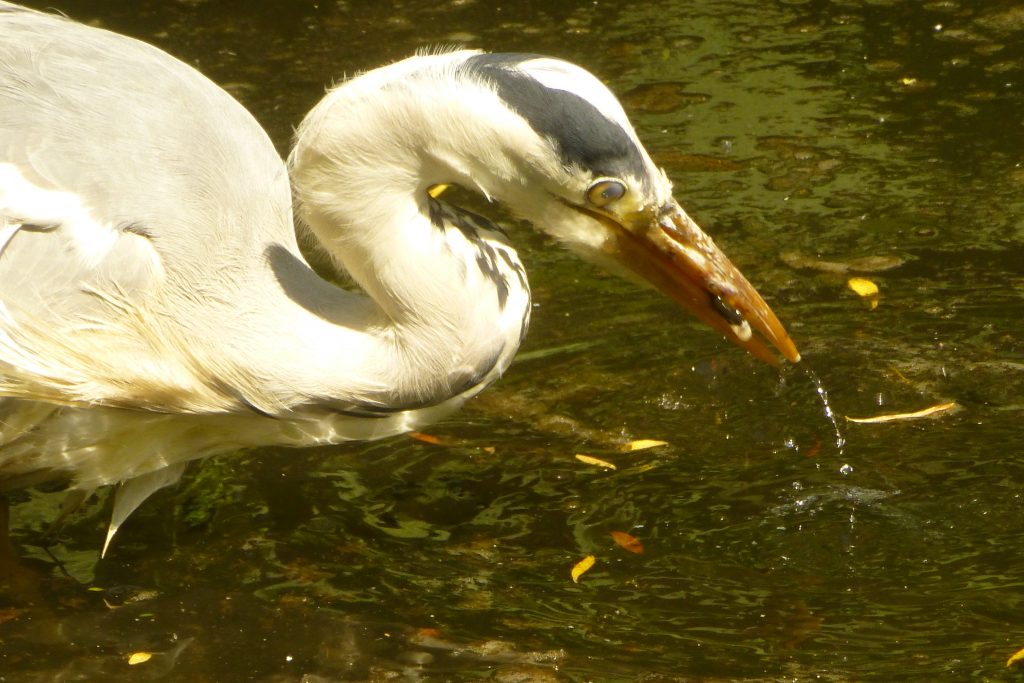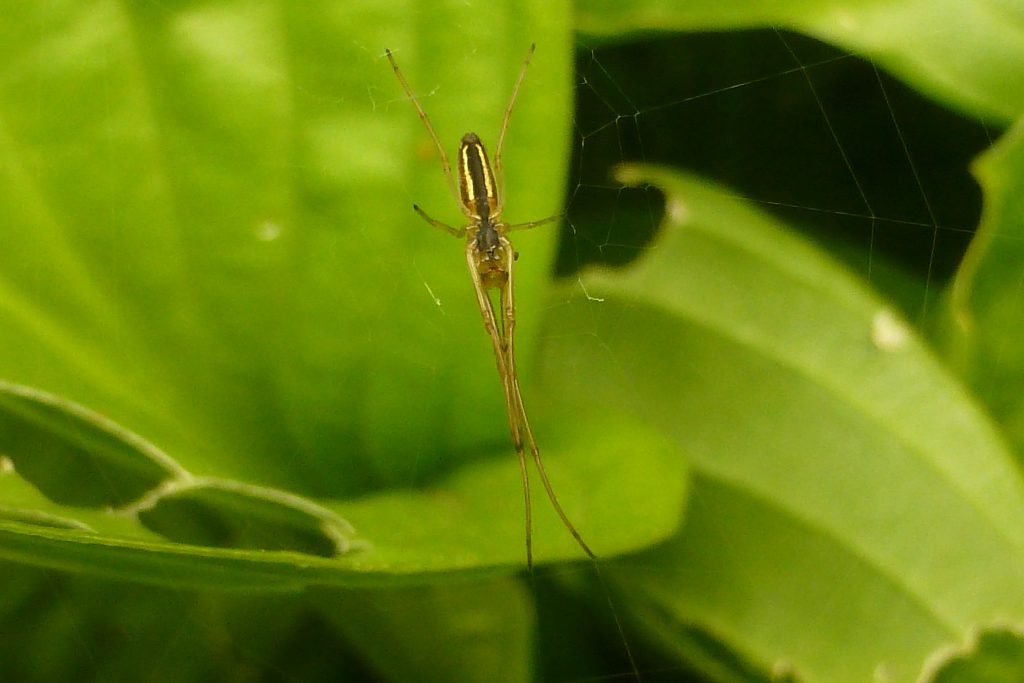June continued to be rather chilly at the start although there was a brief warmer spell mid-month and again towards the end, when a heat wave was being forecast for the beginning of July. Eleven species were added to the Garden’s list during the month, taking it past 750 and ending the month on 757.
Birds As in April and May, 36 bird species were recorded in the Garden during June. A Jay flew over the glasshouses / back yard area on 3rd (the first since 2011) and a Buzzard was seen on 8th. The Garden’s first Swallow of 2015 was seen on 11th with a second record on 18th. Great Spotted Woodpeckers hatched chicks and there was a second small brood of Moorhen chicks on the Pond but both appeared to succumb to the ever watchful Grey Heron or some other predator. No brood of ducklings was seen this year and at the end of the month the Mallards began to go in to their eclipse moult. Towards the end of the month, there was also a noticeable drop in the number and variety of singing birds, the beginning of the summer lull that marks the end of the breeding season and beginning of moult for many smaller species. The full list of species recorded was: Blackbird, Blackcap, Blue Tit, Bullfinch, Buzzard, Canada Goose, Carrion Crow, Chaffinch, Chiffchaff, Coal Tit, Dunnock, Feral Pigeon, Goldcrest, Goldfinch, Great Spotted Woodpecker, Great Tit, Greenfinch, Grey Heron, Herring Gull, Jackdaw, Jay, Lesser Black-backed Gull, Long-tailed Tit, Magpie, Mallard, Moorhen, Robin, Song Thrush, Sparrowhawk, Stock Dove, Swallow, Swift, Tawny Owl, Tree Creeper, Wood Pigeon, Wren.
Insects and other invertebrates: Butterflies continued to be few and far between, with the only species seen being Small White on four dates and Green-veined White on the last day of the month. Among day-flying moths, Silver-ground Carpet was present from 11th and a Nettle-tap was seen on 16th. Plain Golden Y was a new Garden moth record (29th: see http://stories.rbge.org.uk/archives/16165). The mines of several leaf-mining moths began to be recorded, with Phyllonorycter ulmifoliella being a new Garden record. Nineteen species of hymenopterans (bees, wasps, ants, sawflies etc.) were recorded, the most notable being Tree Bumblebee on six different dates and Wool Carder Bee from 29th (for more details see http://stories.rbge.org.uk/archives/16173). Single Azure Damselflies were spotted at the lochan in the Scottish Heath Garden on 23rd and 29th but it seems to be a very poor year for them at RBGE in 2015 so far; no mating has yet been observed. Eight hoverfly species were seen, including Marmalade Hoverfly on four dates. Ten species of leaf-mining flies made their first appearances of 2015, with four of them being new Garden records. Three other flies were new Garden records, including a further two cranefly species (Tipula lunata on 18th, Tipula maxima on 29th – for more on the latter see http://stories.rbge.org.uk/archives/16165), and the Garden’s second snipe-fly species (Rhagio notatus) on 18th. Forest (Red-legged) Shield Bug was seen on five dates and six other bugs and aphids were recorded; ‘cuckoo-spit’ (hiding the nymphs, or young stages, of Common Froghoppers) was widespread in the wilder parts of the Garden from 15th. The pollen beetle Brachypterus glaber on stinging nettle male flowers was a new Garden record (the 750th, as previously reported in Botanics Stories: http://stories.rbge.org.uk/archives/16009) and the weevils Phyllobius maculicornis and Polydrusus formosus made their annual appearance on the hornbeam hedge in the Queen Mother’s Garden. Tetragnatha extensa, a very long-legged narrow-bodied spider seen on 15th, completed the month’s crop of new Garden records and galls produced by several species of gall mite were seen.



Peter Upton
Thanks Robert – very interesting reading, and the photo of the Tetragnatha extensa is wonderful. I’d like to know a few more spiders (I don’t know any actually), so this is a good start. I know this one by sight, (I like to think), so shall make an effort to remember her name.